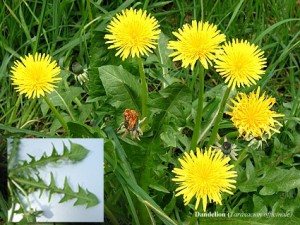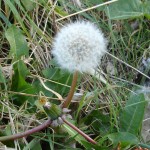Dandelion
Latin: Taraxacum officinale
Irish: Caisearbhán
The yellow flowers, the lobed leaves, the hollow flower stems that exude latex (milky substance), and the downy seeds of Dandelion are very familiar to most people. It is a native species that is, generally, not regarded as very attractive but Dandelions are special in several ways.
Their biology is very complex; for example, in Co. Dublin alone over 70 sub-species have been recorded and these can set seed without pollination and they never, therefore, interbreed. Dandelions are also special in the sense that they have many different roles: a weed; flavouring for wine; food for pets; a salad vegetable; a significant source of pollen and nectar for honeybees; and a medicinal plant.
The term “officinale” in the generic name of a species indicates that it has a history of medicinal use. Preparations from Dandelion have been, and are still used as a diuretic and a tonic. In fact, its diuretic properties are frequently advanced as an explanation for one of its common names – “piss-the-bed”.
One theory on the origin of the name “dandelion” is that it is the corruption of a French name – “dent de leon” – meaning lion’s teeth, in reference to the sharply indented outline of the dandelion leaf.
It is abundant throughout the course, especially where grass is not mowed frequently.

